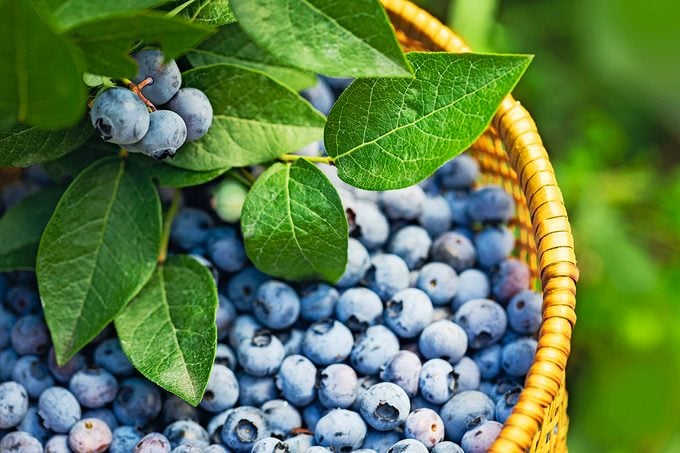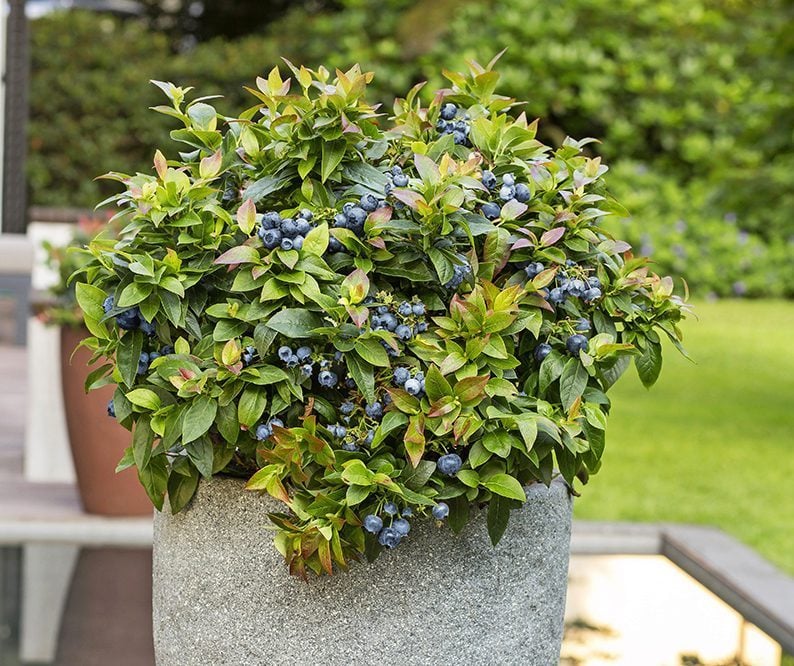How to Grow Blueberries in Your Own Backyard
Updated: May 17, 2024
Try these indispensable tips for successfully growing and harvesting blueberries, an amazing superfood.

Nothing is better than picking a bowl of sweet and tangy blueberries fresh from your garden, so follow these tips for how to grow blueberries at home. Not only are they an antioxidant-rich superfood, but the plants (Vaccinium spp.) are easygoing, high-performing shrubs you’ll be glad you planted. And if you can spare any for the birds, they’ll thank you too.
Blueberries deliver color throughout three seasons—blush pink spring flowers, indigo summer fruit and blazing orange-red fall foliage.
“I personally love them because they are super low maintenance while being both ornamental and edible,” says Kristen Pullen, woody ornamental portfolio manager at Star Roses and Plants, which offers compact, patio-ready berry plants of many kinds, but especially blueberries, in its Bushel and Berry collection.
On This Page
Choosing the Best Blueberries to Grow

“The first thing is to know your USDA growing zone,” Kristen says. “And the second is to look up a chill hour map for the U.S., because blueberries require a certain number of chill hours to fruit.” Choose varieties that need fewer chill hours than your region gets.
Blueberry varieties range from 1 to 6 feet in height, and some are semi-evergreen in temperate zones. Across species, fruit varies in size, flavor profile and bloom time. Like apples, some need a second plant nearby (of the same variety or bloom time) for best pollination, although some, including those from Bushel and Berry, are self-fertile.
More berries you can grow at home
Planting Blueberries

For a robust harvest, blueberries require your sunniest spot, needing a minimum of six hours of sunshine. They thrive in containers or in the ground, in well-draining soil within a pH range of 4.5 to 5.5. Check your pH level by mailing samples to your local agricultural extension office. To lower the soil pH, use fertilizer made for acid-loving plants or mix in peat using a 2:1 soil-to-peat ratio. Retest each spring.
When spacing plants, Kristen suggests adding 1 foot to the distance listed on the tag. So if it says 5 feet, plant on 6-foot centers. For a decorative and tasty hedge, you can plant blueberries as close as 1 foot apart.
Once you’re ready to plant, dig a hole wider than the nursery pot and as deep, then loosen the roots, fill with garden soil and water well. If planting in containers, choose a pot at least 12 to 16 inches in diameter and 10 inches deep, Kristen says.
Follow these expert tips for growing asparagus at home.
Watering and Fertilizing Tips for Blueberries
Water blueberry plants up to four times a week as needed to keep soil moist but not soggy during their first year in your garden. Eventually, weekly deep waterings should suffice during mild temperatures. Thirstier potted plants may need daily watering during extreme heat. If desired, feed with a balanced slow-release or liquid fertilizer.
Learn how to grow an indoor lemon tree.
Pruning Blueberries
Trim broken or dead branches annually and cut one-third of the branches to the ground every three years to promote air circulation and fresh growth. Because blueberries bloom on old wood, snipping last season’s branches also nixes this year’s fruit, so be mindful as you’re pruning.
Next, check out the top 10 tropical fruit trees to grow.





















